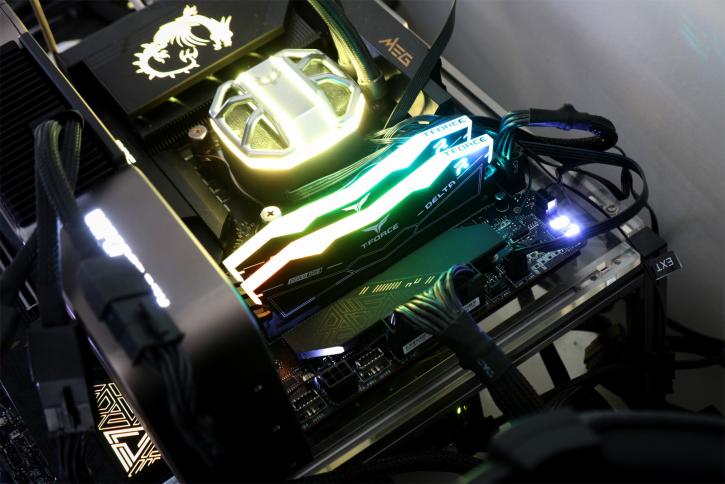Introduction
Memory Scaling with T-FORCE DELTA RGB 7200 MHz CL34 DDR5 review
Raptor Lake; what memory frequency and latency?
We are thrilled to share our experience with the T-FORCE DELTA RGB 7200 MHz CL34 DDR5 memory kit. The performance of Raptor Lake platform has been truly outstanding. Raptor Lake has exceeded expectations in terms of performance. However, the platform infrastructure is quite varied, with support for DDR4 memory and the ability for Z790 motherboards to handle fast memory frequencies. Recently, Team Group has introduced a new RGB memory kit with a speed rating of an impressive 7200 MHz. This new DELTA RGB memory, which is part of their T-FORCE line of gaming memory, is the first to reach the 7000 MHz mark officially. We were able to achieve this unusually high-speed memory.
The final outcome of using DDR5 memory will be somewhat complex. DDR5 includes new features such as a Power Management Integrated Circuit (PMIC) which controls voltage changes. This allows the DDR5 module to manage energy consumption and reduce the load on the motherboard controller. In comparison to DDR4, the nominal voltage for DDR5 is 1.1V, while the standard voltage for DDR4 is 1.2V. Additionally, DDR4 typically uses a voltage of 1.35V for XMP, but it can reach as high as 1.45V in certain cases. The expected XMP voltage for DDR5 is 1.25V. Another new feature of DDR5 is the introduction of XMP 3.0, an updated version of the previous iteration. The number of profiles has been increased from 3 to 5, allowing for fine-tuning of the system. This could mean that there are three profiles for manufacturer settings and two additional slots for users to save their own profiles, depending on the configuration.
It is important to note that while we all expected significant performance improvements from DDR5 memory, that may not be entirely the case. If you are building a new system, it may be worthwhile to consider purchasing DDR5 memory, however, it comes with a higher cost. The memory kit we are reviewing today, for example, is priced at 389 EUR for 12 EUR per GB. In our testing, we will be comparing the sweet spot configurations of DDR5 at 5200 Mhz, 6000 MHz, and the new DDR5 7200 CL34 kit (2x 16GB) to evaluate the performance difference and cost-effectiveness. Overall, it is important to weigh the potential performance gains against the cost when making a decision on whether to upgrade to DDR5 memory.


